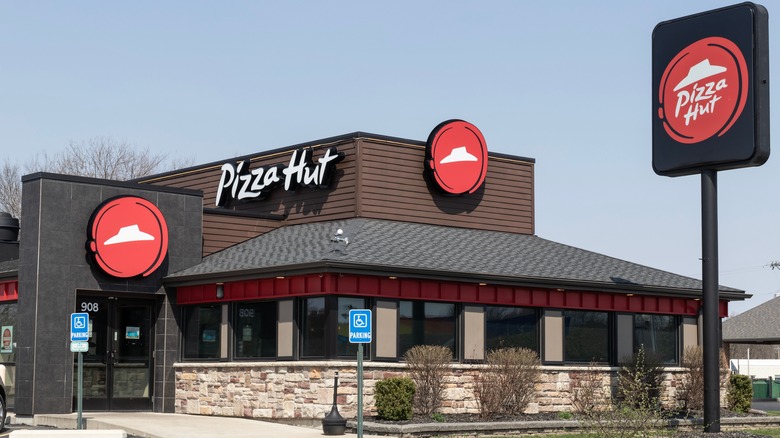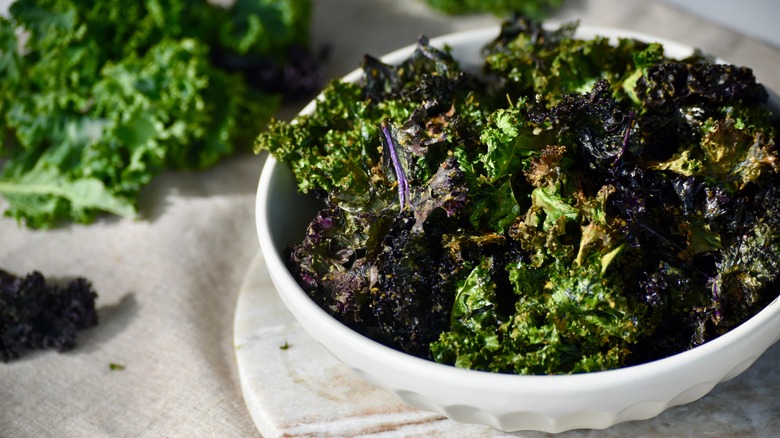The Wasteful Reason Pizza Hut Used To Buy The Most Kale In The US
Kale has become the go-to green for salads, smoothies, and slaws over the past decade. It began to trend around 2011 when publicist Oberon Sinclair created a faux campaign by the nonexistent "American Kale Association," utilizing guerilla marketing to get kale on menus across New York City. In 2012, Bon Appetit claimed it was "the Year of Kale," and in 2014, Beyoncé wore a sweatshirt in a music video with the leafy green's name on it. These instances, coupled with kale being a nutritious food rich in antioxidants, skyrocketed the vegetable to popularity. However, before it became a nutritional staple in consumer's health journeys across the country, it had a less-demanding job: Garnishing the salad bar at Pizza Hut.
Until 2013, this pizza conglomerate used kale to make its salad buffets beautiful. In 2012, Pizza Hut purchased almost 14,000 pounds of the greens, making the company the largest consumer of kale in America despite the item never being served to customers. The kale wasn't used only for decorative purposes; it was used to cover up the ice that surrounded the dishes of ingredients and kept them cold. In 2013, the pizza chain switched to a refrigerated salad bar to keep ingredients fresh.
Pizza Hut and kale post-breakup
While these two powerhouses once shared a home, they've gone their separate ways thanks to the refrigeration of Pizza Hut's salad bars a decade ago. However, its salad bars no longer exist in the U.S. (although they do at some locations in Canada, the U.K., and Australia), partially due to the pandemic and partially due to low demand. Salads aren't even listed as menu items on the company's website and only certain locations still serve them. The brand is fully focused on pizza these days. Just last year, Pizza Hut broke the record for world's biggest pizza with a 68,000-slice pie. Truly, no one out-pizzas the Hut, even when it doesn't have kale.
The cruciferous green has had a glow-up since its days as an adornment and is now the star of its own salads, plus other hearty kale recipes like lasagna and Portuguese soup. It has even worked its way into restaurant names like Kale My Name in Chicago. This is thanks to its many different types and nutritional benefits, such as anti-cancer compounds and its potential ability to lower cholesterol levels. While there were 145 million pounds of kale on the American market in 2012, the demand has gone up since, with 335 million pounds on the market in 2017. If you haven't given kale a chance yet, it's worth a try, and if you don't like the taste, you can always use it as a decoration.

